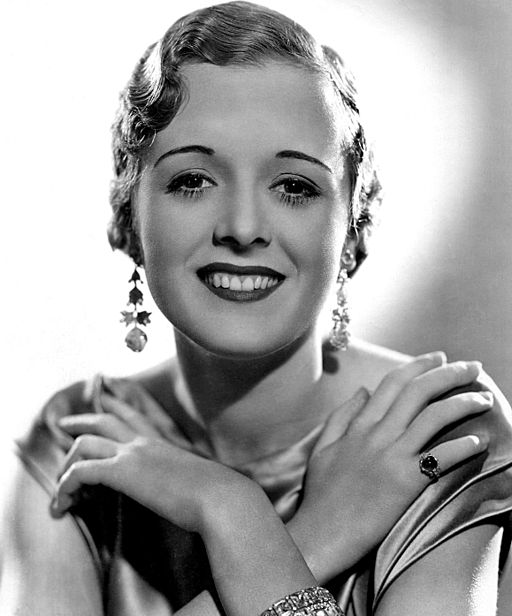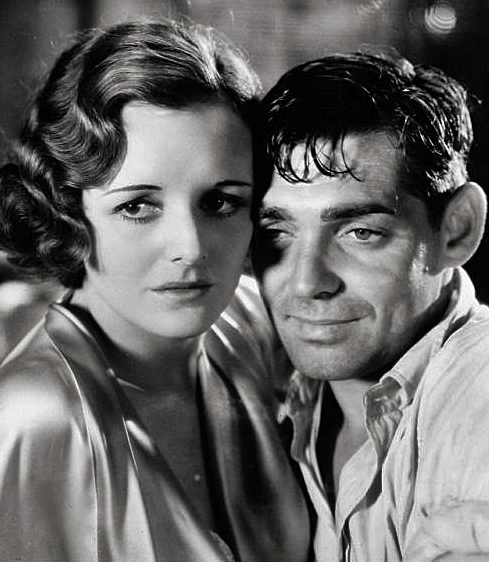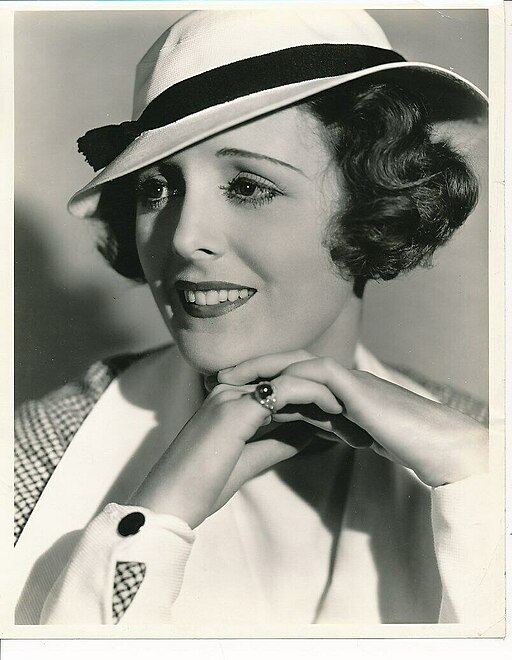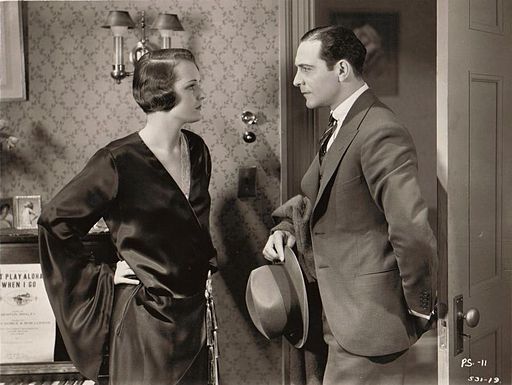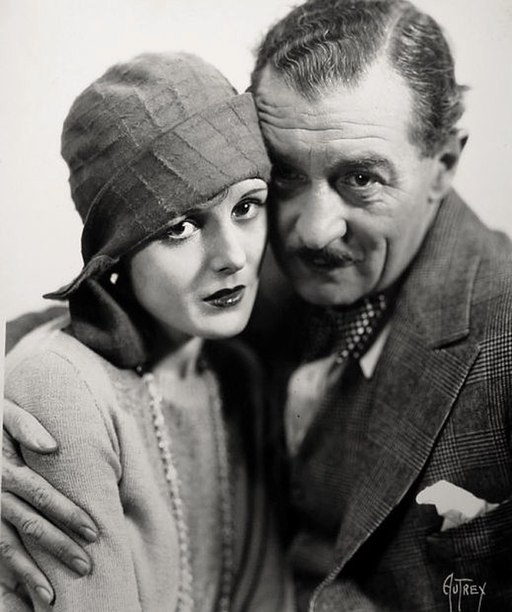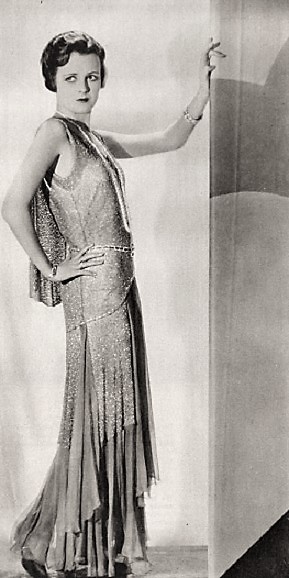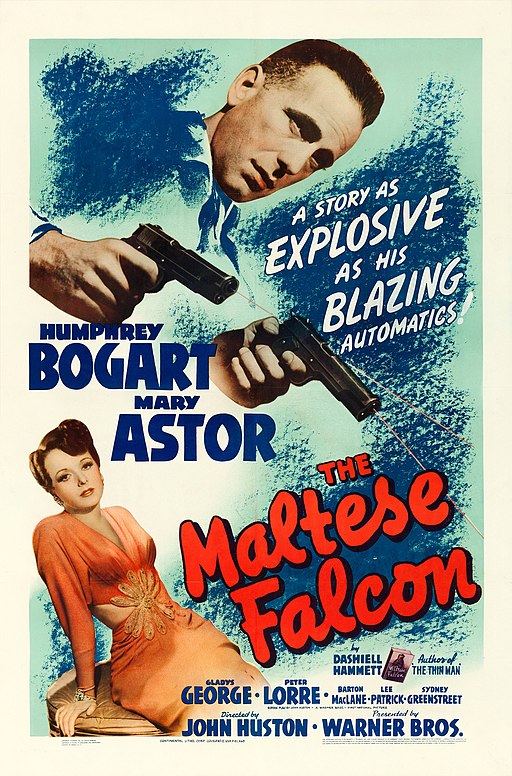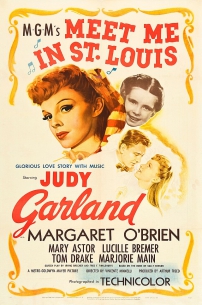Mary Astor
back| Full Name | Lucile Vasconcellos Langhanke |
| Stage Name | Mary Astor |
| Born | May 3, 1906 |
| Birthplace | Quincy, Illinois, United States |
| Died | September 25, 1987 |
| Buried | Holy Cross Cemetery, Culver City, California, United States |
| Married to | Kenneth Hawks (m. 1928; his death 1930) - Franklin Thorpe (m. 1931; div. 1935) - Manuel del Campo (m. 1936; div. 1941) - Thomas Gordon Wheelock (m. 1945; div. 1955) |
| Children | Marylyn Thorpe (b. 1930, with Franklin Thorpe) - Anthony del Campo (b. 1939, with Manuel del Campo) |
| Notable films | The Maltese Falcon (1941) - Meet Me in St. Louis (1944) - Dodsworth (1936) - The Great Lie (1941) - Midnight (1939) |
Mary Astor
The Cameo Girl
Mary Astor was a prominent American actress in Hollywood's Golden Age. Her career, spanning both silent and sound films, began in the early 1920s. Astor's transition to "talkies" was seamless, showcasing her versatile acting skills.
Her most acclaimed role was in "The Great Lie" (1941), for which she won the Academy Award for Best Supporting Actress. Astor is also renowned for her portrayal of the enigmatic Brigid O'Shaughnessy in the classic film noir "The Maltese Falcon" (1941).
Mary Astor was often referred to as "The Cameo Girl," a nickname that encapsulated her ability to leave a lasting impression with even the briefest of appearances.
Related
Mary Astor (1906 – 1987)
Biography and Overview of her Career
Mary Astor was a significant figure in the Golden Age of Hollywood, known for her versatile acting skills and a career that spanned both silent and sound films. Here's a more detailed biography covering various aspects of her life:
- Birth and Early Life: Mary Astor was born as Lucile Vasconcellos Langhanke on May 3, 1906, in Quincy, Illinois. She was the only child of Otto Ludwig Langhanke and Helen Marie de Vasconcellos. Her father was of German descent, and her mother was of Portuguese and Irish ancestry. Astor's parents were educators but later became overly involved in her acting career.
- Entry into Acting: Astor's journey into the world of acting began at a young age. Encouraged by her parents, she participated in a beauty contest at age 14 which led to a screen test for motion pictures. By 1920, she had moved to New York City and started appearing in movies.
- Silent Film Era: Her early career was in silent films. She appeared in many films during the 1920s, gradually gaining recognition for her beauty and acting ability.
- Transition to Sound Films: With the advent of sound in cinema, Astor smoothly transitioned into talking films. Her voice and acting style suited the new medium well, and she became even more popular.
- Marriages and Relationships: Mary Astor was married four times. Her first marriage was to director Kenneth Hawks, brother of Howard Hawks, in 1928. Sadly, he died in an airplane crash in 1930. Her second marriage was to Dr. Franklin Thorpe in 1931, but they divorced in 1935 amidst a scandalous custody battle over their daughter, Marylyn. Her third marriage was to Mexican film editor Manuel del Campo in 1936, with whom she had a son, Anthony. They divorced in 1941. Her final marriage was to Thomas Gordon Wheelock in 1945, ending in divorce in 1955.
- Custody Battle and Scandal: The custody battle for her daughter Marylyn in 1936 was highly publicized due to the revelation of her private diaries, which detailed her affairs with high-profile figures. This scandal was sensational at the time but didn't significantly damage her career.
- Versatility as an Actress: She was known for her ability to play a wide range of characters, from romantic leads to complex, troubled women.
- Writing: Beyond acting, Astor had a passion for writing. She authored two novels and an autobiography, "My Story," which was published in 1959.
- Later Career and Retirement: In the 1950s, her career slowed down, and she made her final film appearance in 1964. She retired from acting and focused on writing.
- Death: Mary Astor passed away on September 25, 1987, at the age of 81. The cause of death was respiratory failure due to pulmonary emphysema. She had struggled with chronic pulmonary disease in her later years.
- Legacy: Astor is remembered for her contributions to the film industry, her resilience in personal life, and her ability to shine despite the challenges and scandals she faced.
Documentary of Mary Astor:
Notable Movies featuring Mary Astor:
Silent Film Era
- 1921 "The Scarecrow": A short film where Astor had a minor role.
- 1922 "John Smith": A silent drama featuring Astor in a supporting role.
- 1923 "The Fighting American": Astor plays a significant role in this silent drama.
- 1924 "Inez from Hollywood": Astor stars in this silent drama set in Hollywood.
Transition to Sound Films
- 1929 "The Runaway Bride": One of her early sound films, a romantic drama.
- 1930 "Ladies Love Brutes": A drama where Astor co-stars with George Bancroft.
- 1932 "Red Dust": Astor plays a significant role in this romantic drama set in Indochina.
- 1933 "The Kennel Murder Case": A mystery film where Astor plays a leading role.
- 1934 "The Man with Two Faces": A drama with Astor in a key role.
Peak Career
- 1936 "Dodsworth": Astor plays Edith Cortright in this drama about a retired auto manufacturer and his wife.
- 1939 "Midnight": A romantic comedy with Astor in a supporting role.
- 1940 "Brigham Young": A western film where Astor plays a significant role.
- 1941 "The Maltese Falcon": A film noir classic, where Astor plays the femme fatale Brigid O'Shaughnessy.
- 1941 "The Great Lie": Astor won an Academy Award for her role as a concert pianist in this drama.
- 1942 "Across the Pacific": A spy film featuring Astor opposite Humphrey Bogart.
Later Years
- 1944 "Meet Me in St. Louis": A musical film where Astor plays Mrs. Anna Smith, the mother of a close-knit family in St. Louis.
- 1946 "The Strange Love of Martha Ivers": A film noir with Astor in a supporting role.
- 1949 "Little Women": Astor plays Marmee, the mother of the March sisters, in this adaptation of the Louisa May Alcott novel.
- 1952 "The Turning Point": A crime drama featuring Astor in a key role.
- 1956 "A Kiss Before Dying": Astor has a supporting role in this film noir.
Final Appearances
- 1964 "Hush… Hush, Sweet Charlotte": One of her last films, a psychological thriller with Astor in a supporting role.
Analysis of the Acting Style of Mary Astor:
Mary Astor's acting style was a rich tapestry of subtlety, depth, and versatility, which evolved significantly over her career from the silent era through to the golden age of Hollywood.
Early Career in Silent Films:
-
Expressive Facial Gestures: In the silent film era, Astor's acting was marked by her ability to convey complex emotions through facial expressions and body language. This was crucial in a time when dialogue couldn't be heard.
- Elegant Poise: Astor often portrayed characters with an air of elegance and grace, which became a hallmark of her performances.
Transition to Sound Films:
- Adaptability: Astor smoothly transitioned into talking films, a feat that not all silent film stars managed. Her voice added a new dimension to her performances.
- Nuanced Vocal Delivery: In sound films, her voice—calm, measured, and resonant—became an asset. She was adept at using tone and inflection to add layers to her characters.
Acting in the Golden Age of Hollywood:
- Complex Character Portrayals: Astor excelled at playing multifaceted characters. Her roles often had a mix of vulnerability and strength, which she portrayed with a subtle yet powerful presence.
- Emotional Depth: Whether playing a femme fatale, a distressed mother, or a sophisticated lady, Astor imbued her characters with a profound emotional depth, making them relatable and memorable.
- Versatility: Astor's versatility was evident in her ability to switch genres effortlessly, from dramas to comedies, romances to film noir.
- Chemistry with Co-Stars: She had a remarkable ability to build chemistry with her co-stars, enhancing her performance and making her a desirable cast member for many leading men of the era.
Legacy and Influence:
- Trailblazer for Female Actors: Astor's career spanned significant changes in cinema, and she adapted to each with skill. Her resilience and adaptability made her a role model for actresses transitioning between different eras of filmmaking.
- Influence on Acting Techniques: Her move from the exaggerated expressions necessary in silent films to the more nuanced performances required in sound films demonstrated her deep understanding of acting techniques and her ability to evolve as an actress.
Trivia
A] The Battle for Mary Astor’s Daughter:
Mary Astor's daughter, Marylyn Thorpe Hauoli, was born in 1930. Marylyn became a central figure in a highly publicized custody battle between Astor and her then-husband, Dr. Franklin Thorpe, in 1936.
This custody battle was one of the most scandalous events of its time in Hollywood, primarily due to the revelation of Astor's personal diaries, which contained intimate details about her private life, including affairs with high-profile figures.
- Birth and Early Life: Marylyn was born into a life of Hollywood glamour and controversy due to her mother's fame and the highly public nature of the custody case.
- Custody Battle Impact: The custody battle and the scandal surrounding it received extensive media coverage, thrusting Marylyn into the public eye at a very young age.
- Privacy and Later Life: Unlike her mother, Marylyn largely stayed out of the public eye as an adult. Details about her later life, career, or personal pursuits are not widely documented or known, as she seemed to have chosen a more private existence away from the glare of Hollywood.
B] The Diary of Mary Astor:
Mary Astor's diary became infamous during the 1930s, particularly due to its role in a highly publicized custody battle over her daughter Marylyn in 1936. The diary gained notoriety for its candid and explicit content, which was scandalous for the time.
Key Aspects of the Diary Scandal
- Content: Astor's diary contained detailed accounts of her personal and romantic life, including affairs with high-profile figures in Hollywood. This was considered extremely scandalous and provocative during that era.
- Custody Battle: During her bitter custody battle with her ex-husband, Dr. Franklin Thorpe, the diary was brought into the proceedings. Thorpe's lawyers intended to use it to prove Astor's alleged moral inadequacy as a mother.
- Public Reaction: The scandal around the diary was a major media sensation. The public's fascination with Astor's private life was fueled by the sensationalism of the trial and the lurid details purportedly in the diary.
- Outcome: Despite the controversy, Astor won the custody battle. The court ruled in her favor, and she retained custody of her daughter.
- Professional Impact: Remarkably, the scandal did not significantly damage Astor's film career. She continued to work and even won an Academy Award in 1941, a testament to her talent and the support she had in the industry.
- Cultural Significance: The diary scandal became a part of Hollywood lore, emblematic of the era's clash between the film industry's glamorous façade and the personal lives of its stars.
C] The Trial of Mary Astor:
The custody trial involving Mary Astor over her daughter Marylyn in 1936 was one of the most sensational and scandalous events of its time in Hollywood. Here are the key aspects of the trial:
Background
- Divorce and Custody Battle: The trial was part of Astor's bitter divorce from her second husband, Dr. Franklin Thorpe. The primary issue at stake was the custody of their daughter, Marylyn.
The Diary's Role
- Sensational Content: Astor's personal diary became a focal point of the trial. Thorpe and his lawyers sought to use the diary, which contained explicit details of Astor's private life and affairs with notable figures, including George S. Kaufman, to challenge her suitability as a mother.
- Public and Media Frenzy: The diary's contents were leaked to the press, leading to a media frenzy. However, the actual diary was never officially submitted as evidence in court, and the judge refused to permit its contents to be read in the courtroom.
Trial Proceedings
- Character Witnesses and Testimonies: The trial featured testimonies from various character witnesses. Astor herself took the stand, facing intense scrutiny and invasive questioning about her personal life.
- Public Support: Despite the scandalous nature of the trial, Astor received considerable public support, partly due to sympathy over the invasion of her privacy and the sensationalism of the media.
Outcome
- Custody Decision: Astor won the custody battle, a significant victory given the moral standards and gender biases of the time. The judge granted her custody of Marylyn, citing that the welfare of the child would be best served with her mother.
Impact and Legacy
- Impact on Astor's Career: Contrary to expectations, the trial did not destroy Astor's career. She continued to work successfully in Hollywood, winning an Academy Award a few years later.
- Cultural Significance: The trial was a landmark event in Hollywood history, highlighting the clash between the private lives of movie stars and public morality. It reflected the growing interest and influence of the media in the personal affairs of celebrities.
The Mary Astor custody trial was a dramatic and defining moment in her life, showcasing the challenges faced by film stars in the public eye and the resilience she demonstrated in both her personal and professional life.
Memorable Quotes from Mary Astor:
Mary Astor, known for her compelling on-screen presence, delivered several memorable quotes both in her film roles and in her personal writings. Here are some notable examples:
Memorable Quotes from Her Films
- "The Maltese Falcon" (1941): As Brigid O'Shaughnessy, Astor delivered lines with a mix of vulnerability and mystery, making her character one of the most iconic femme fatales in film noir. A notable quote: "I haven't lived a good life. I've been bad, worse than you could know."
- "The Great Lie" (1941): In her Oscar-winning performance, Astor's character Sandra Kovak is strong-willed and dramatic. One memorable line is: "I'm a very forthright person. You'll always know where you stand with me."
Quotes from Her Autobiography
In her autobiography, "My Story," Astor provided insights into her life and experiences in Hollywood. Some impactful quotes include:
- "There are five stages in the life of an actor: Who's Mary Astor? Get me Mary Astor. Get me a young Mary Astor. Who's Mary Astor? What's a Mary Astor?"
- "We actors are the most generous people on earth. We give away our most precious thoughts and feelings."
- "I was never totally involved in movies. I was just making my father's dream come true."
Personal Reflections and Observations
Astor was also known for her candid reflections on life, fame, and her experiences in Hollywood. Some memorable quotes from interviews and personal writings are:
- "Once you start asking questions, innocence is gone."
- "There is not much to say about acting but this. Never settle back on your heels. Never relax. If you relax, the audience relaxes. And always mean everything you say."
- "A person without a memory is either a child or an amnesiac. A country without a memory is neither child nor adult. It is just a country, lost."
Significance of her Part in “The Great Lie”:
Mary Astor's role in "The Great Lie" (1941) was highly significant in her career for several key reasons:
- Oscar Recognition: Astor won the Academy Award for Best Supporting Actress for her portrayal of concert pianist Sandra Kovak. This was a major milestone in her career, affirming her talent and versatility as an actress. An Oscar win not only brought her prestige but also helped in securing more challenging and prominent roles in future projects.
- Showcasing Her Talent: In "The Great Lie", Astor's performance was lauded for its depth and complexity. Her portrayal of a strong, independent, and somewhat unscrupulous woman was a departure from more traditional female roles of the time, showcasing her range as an actress.
- Reviving Her Career: At the time "The Great Lie" was released, Astor's career had been somewhat overshadowed by her personal life, particularly the scandalous custody battle over her daughter. Her Oscar win helped to refocus public attention on her professional abilities and away from her personal difficulties.
- Contrast with Bette Davis: In the film, Astor played opposite Bette Davis, one of the biggest stars of the era. Her ability to hold her own and even outshine Davis in some scenes was a testament to her acting skill. It demonstrated that she could play complex roles and adapt to different acting styles.
- Enhanced Reputation in Hollywood: Winning an Academy Award elevated Astor's standing in Hollywood. It opened doors to more significant roles and collaborations with prominent directors and actors.
- A Personal Triumph: Beyond the professional acclaim, the role and the subsequent Oscar win were a personal triumph for Astor. They came at a time when she was coping with intense personal challenges, and her success in "The Great Lie" was a testament to her resilience and dedication to her craft.
Awards and Recognition:
Academy Awards
- 1942: Astor won the Academy Award for Best Supporting Actress for her role as Sandra Kovak in "The Great Lie". This remains her most notable and celebrated achievement in her acting career.
Other Honors and Recognitions
While Astor's most prominent recognition was her Academy Award win, her career, spanning both the silent and sound eras of Hollywood, was marked more by critical acclaim and audience appreciation than by a long list of awards. During her time, there were fewer awards ceremonies than there are today, and many performances that might now be recognized were overlooked.
- Walk of Fame: Mary Astor has a star on the Hollywood Walk of Fame for her contribution to Motion Pictures, located at 6701 Hollywood Boulevard. This star is a testament to her enduring impact on the film industry and her status as a Hollywood icon.
- Legacy and Retrospective Honors: Posthumously, her work has been celebrated in numerous film retrospectives and festivals. Critics and film historians often recognize her as one of the great actresses of her time, particularly for her roles in classics like "The Maltese Falcon" and "The Great Lie".
Lack of Other Nominations
- It's notable that Astor's career didn't garner a multitude of nominations from organizations like the Academy. This is partly due to the era in which she worked, a time when there were fewer categories and less frequent recognition of supporting roles.
Full List of Movies with Mary Astor:
1920
The Scarecrow
The Beggar Maid
Sentimental Tommy
1921
The Bashful Suitor
The Sands of Dee
1922
The Man Who Played God
The Bond Boy
John Smith
The Woman Conquers
1923
The Bright Shawl
Puritan Passions
The Fighting American
1924
The Marriage Cheat
Unguarded Women
Inez from Hollywood
1925
Playing with Souls
Scarlet Saint
Enticement
The Pace That Thrills
The Primrose Path
Don Q Son of Zorro
Heart to Heart
The Sure Thing
1926
Forever After
The Untamed Lady
The Runaway
Beau Geste
My Official Wife
The Johnstown Flood
Bachelors' Brides
1927
Two Arabian Knights
Rough House Rosie
The Sea Tiger
The Private Life of Helen of Troy
1928
Dry Martini
The Sunset Derby
Noah's Ark
Romance of the Underworld
Heart to Heart
1929
The Woman from Hell
The Squall
The Show of Shows
The Lock Step
The Runaway Bride
Dressed to Kill
1930
Other Men's Women
Ladies Love Brutes
Holiday
The Lash
Return of the Terror
A Successful Calamity
Red Dust
1931
Behind Office Doors
Smart Woman
The Sin Ship
Men of Chance
The Lost Squadron
1932
The Woman in Room 13
Successful Calamity
Red Dust
Those We Love
A Successful Calamity
1933
The Kennel Murder Case
Convention City
Jennie Gerhardt
1934
The Man with Two Faces
Return of the Terror
I Am a Thief
Easy to Love
1935
Red Hot Tires
Page Miss Glory
Dinky
Man of Iron
The Case of the Curious Bride
Cardinal Richelieu
Straight from the Heart
Dodsworth
1936
More Than a Secretary
The Prisoner of Shark Island
Dodsworth
And So They Were Married
Go West Young Man
1937
The Hurricane
Midnight
Woman Against Woman
1938
Listen, Darling
The Sisters
Paradise for Three
There's Always a Woman
1939
Midnight
The Light That Failed
1940
Brigham Young
Turnabout
Little Old New York
1941
The Great Lie
The Maltese Falcon
H.M. Pulham, Esq.
1942
Across the Pacific
The Palm Beach Story
1943
Thousands Cheer
Young Ideas
Meet Me in St. Louis
1944
Blonde Fever
1946
Claudia and David
Fiesta
The Strange Love of Martha Ivers
1948
Act of Violence
Cass Timberlane
1949
Any Number Can Play
Little Women
East Side, West Side
1950
A Kiss for Corliss
Young Man with a Horn
1951
The House on Telegraph Hill
1952
The Turning Point
Desert Pursuit
Return to Paradise
1953
Act of Love
1954
The World Is Full of Married Men
1956
A Kiss Before Dying
1959
This Earth Is Mine
1961
Return to Peyton Place
1964
Youngblood Hawke
Hush… Hush, Sweet Charlotte

